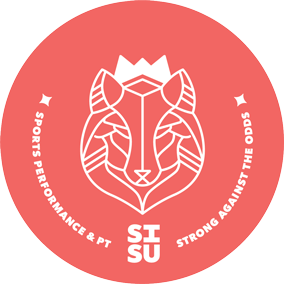ACL (anterior cruciate ligament) injuries are not fun and if you’ve ever had one, you’ll know exactly what I’m talking about. Tearing the ACL can keep an athlete sidelined for months…even years! What’s more, is that the results of surgery are not great either. Studies show us that only about 55% will return to their previous level of play, about 30% will tear the ACL agin, and many of these athletes may end up with osteoarthritis later in life.
The good news, is that we know there are effective techniques to help reduce the risk of ACL tear by a rate of 50-80%. Finding ways to reduce this risk in our young soccer players is important towards keeping them engaged in sport. And while we cannot prevent all injuries from happening or even predict when injuries will happen, we CAN be more proactive in our efforts to foster healthier youth athletes.
1) Get them training under load
One of the first and most important things you can do to help mitigate ACL injury risk would be to get the athlete training under load. There is a strong caveat to this though, and that is to say that it is HIGHLY recommended they do so under the trained supervision of a physical therapist, fitness coach, experienced personal trainer, or performance coach. Load is great for young athletes, but the quality of their movements is key towards injury reduction of ANY kind. I’m here to debunk the myth that young athletes should avoid weight training. They can and should be doing it, as long as there is direct supervision and proper coaching involved.
2) Teach them how to get low
Participating in any sport that contains quick changes of direction requires a stable platform from which to work. What I see with young athletes is simply a lack of awareness of where their body may be in space. This results in a general low tone approach to movement and ultimately can be a precursor towards getting hurt. Getting low and practicing getting low requires some training, but it can pay off markedly. Research indicates that a risk factor for ACL tear might indeed be poor landing control and mechanics.
Below is a video of a simple exercise known as the “squat jump.” The squat jump is an easy place to start for understanding what “getting low” means. Getting low requires good control through the knees, hinging at the hips and smooth transitions from squat to jump and back again.
3) Have them practice kicking the ball with both legs
When I ask soccer players which leg they think is their dominant leg, 9x/10 they’ll say it’s their kicking leg. And while that leg is their dominant kicking leg, it’s the leg that they’re planting with that becomes the dominant one. Some research shows us that leg dominance is a potential risk factor for ACL injuries. That favoritism can lead to muscular imbalances. The sooner a young athlete is working with both legs, the more likely they are to be dominant on both sides. Which is good for their career as a player, and also quite possibly pretty good for their legs.

My left foot became much stronger AFTER my ACL injury in high school. Now, I am confident with both legs.
4) Jump jump!
Plyometric and neuromusulcar training programs have been proven to be the most effective at reducing injury risk, as well as improving movement quality in young athletes. The important part with these programs is that quality movement is queen. These programs consist of jump training, proprioceptive and balance activities, movement training and are repetitive in nature. Practice, practice, practice. Movement is a skill. As such, that skill needs to be trained, improved upon, and engrained into the body and mind. An additional bonus to this type of movement, is increased speed and agility! Jumping is fun AND productive!
Plyometric training requires quick response time while maintaining good form and mechanics. Before you consider adding jumps to your routine, be sure you have worked on good movement control with the basics first, such as the squat and the squat jump.
5) Teach the child the importance of recovery
Here’s the deal. I see this time and time again. Kids are playing year round sports so young that they are not properly understanding the importance of recovery. What I mean by recovery is simply teaching kids that their bodies AND their minds, need the opportunity to chill out or change things up a bit. There is a reason that professional level athletes take time off. And while they might still be training in the off season, it’s an opportunity for them to recovery. They’re taking the opportunity to recharge. A large body of evidence is showing us that early sport specialization leads to faster burnout and even more injuries. Recovery can mean rest, but it can also mean simply engaging in another sport for a while to change it up and keep things variable. Taking time to learn new skills is a valuable thing for a growing athlete.
6) Find a physio ie. physical therapist (physio sounds better doesn’t it?) to work closely with your child or their team/club
One of the most important things you can do is to get a good physical therapist well-versed in this issue to start working with your kid’s soccer club on implementation of prevention strategies. Many of the strategies are simple warm up techniques that can be used with your child’s team in practices and before games to prep their body for their sport. Research shows us that consistent implementation of these warm ups reduces injuries by 60-80%!!! Beautiful.
7) Mindfulness.
Now, this one is a bit of a funny one because I’ve thrown it in here on my own accord. But I have very good reason to do so!! So much of the literature is showing us that a person’s mental capacity to overcome, or one’s psychological readiness, is paramount after sustaining an ACL injury. I have a theory (and theories are like farts, so do with it what you will), if we get kids being more mindful of their bodies, of their well-being, of their MINDS, injuries will go down. There, I’ve said it. Mindfulness isn’t something we have been teaching our kids and if they’re serious about their sport, you better believe that it’s better to learn this young than it is to learn it old. Many professional level athletes use mindfulness before their games to prepare and be ready. A fair bit of evidence shows us that this actually helps! If we start to imagine success before we go out onto the field, maybe we’ll be more successful as a result? That’s my theory anyway.
Kids are incredible humans. They’re some of the most quickly learning and adaptable creatures in the world. Well I don’t know if that’s true, but it should be. The main point here is that if we catch them young, catch them early and teach them these wonderful things, their risk for injury is likely to go down. And if you manage to do some of these things yourself, well then good on you! The same is likely true for you too, as much of this is very directly applicable to adult athletes.
Thanks for reading. Happy playing.
Cheers,
Dr. Ellie Somers, Physical (err Physio) Therapist
Sisu Sports Performance & PT is accepting new clients!! Feel free to send me an email or schedule an appointment today!






